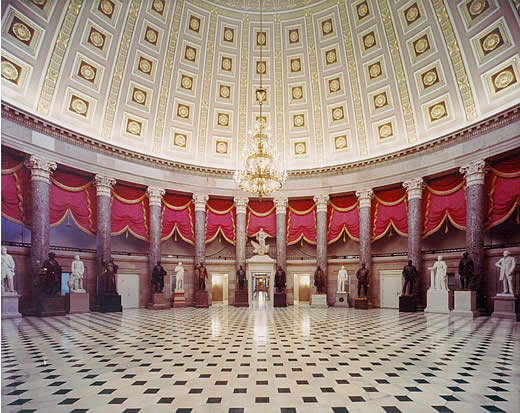Potomac Marble EarthCache
-
Difficulty:
-

-
Terrain:
-

Size:  (other)
(other)
Related Web Page
Please note Use of geocaching.com services is subject to the terms and conditions
in our disclaimer.
Did you know that there is "marble" in Loudoun County?
**Plenty of parking - do not park in front of cache site.**
Please be considerate and do not take rock samples.
Potomac marble is a limestone conglomerate in the Leesburg Member
of the Balls Bluff Siltstone, it is the most striking building
stone quarried near Washington, D.C. This stone was deposited at
the mouths of ancient rivers in a series of alluvial fans in the
western edge of the Triassic Lowland province in Maryland and
Virginia. Called Potomac marble by builders, it is not marble but
rather consists mainly of limestone and quartz pebbles and
multicolored fragments, as much as 12 inches across, naturally
cemented together1.
This limestone conglomerate is cemented together by calcium
carbonate, the major component of all limestone. It has not
experienced the heat and pressure that would have caused
metamorphism to marble.3
Samples of Potomac marble from various localities show marked
differences in color. The Potomac marble in the Capitol area is
predominantly gray but shades to a rich reddish brown. The
inclusions are gray, beige, yellow, black, white, brown, orange,
and reddish brown in an indescribable variety of combinations.
White veins of calcite accentuate the effects of the different
colors.1
Potomac marble was first used in 1815 by Benjamin Latrobe, who was
then at work restoring the Capitol after it was burned by the
British during the War of 1812. Latrobe described this stone as a
very hard but beautiful marble and arranged to quarry it for the
interior of the Capitol. Unfortunately, the beautiful conglomerate
proved to be extremely difficult to work.1
While the restorers could not use the stone for statues they did
use Potomac marble to make the columns at Statuary Hall in the US
Capitol.2


Answer these questions to be able to claim credit for this
EarthCache.
Q1) Along with “Potomac Marble” this conglomerate is
also called "Calico Rock". Why do you think it is called "Calico
Rock"?
Q2) In your observations of the stone, why do you think that
carvers find this rock impossible to work with?
Q3) Compare the large stones at the back and at the front of the
site. What are the differences in the calcium carbonate of the two
largest stones?
Please see the hints/spoiler information for details on where the
description information was pulled.
Additional Hints
(Decrypt)
Ersreraprf
1) Ergevrirq 7/20/2010 sebz uggc://chof.hftf.tbi/tvc/fgbarf/fgbarf3.ugzy choyvfurq ol HFTF
2) Ergevrirq 7/20/2010 sebz uggc://jjj.nbp.tbi/vzntrf/ang_fgng_unyy_1.wct choyvfurq ol gur Nepuvgrpg bs gur Pncvgby
3) Ergevrirq 7/20/2010 sebz uggc://jjj.zpzhyynaf.bet/trbjro/OnfvpCntrYvfgvat/yrrfohet_zrzore.ugz sebz Fgna Qvpxrafba’f oybt